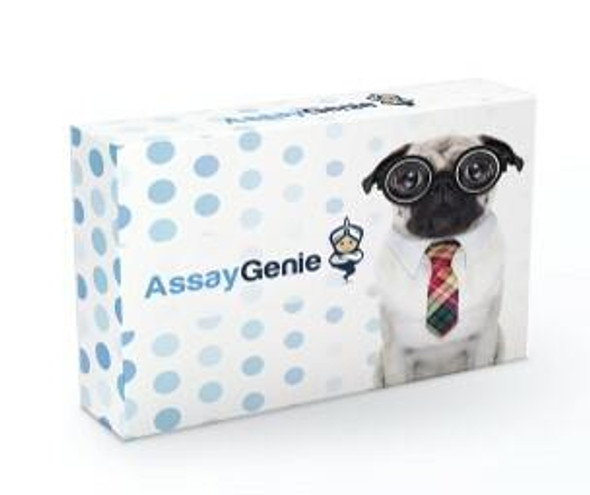Description
Human Clusterin beta PharmaGenie ELISA Kit
| Product SKU: | SBRS0017 |
| Size: | 96T |
| Application: | This ELISA kit is designed to detect human, mouse, and rat Clusterin beta chain. |
| Uniprot: | P10909 |
| Gene ID: | 1191 |
| Gene Names: | CLU |
| Synonyms: | Clusterin beta chain, Apolipoprotein J alpha, ApoJalpha, Complement cytolysis inhibitor a chain |
| Target Species: | Human, Mouse, Rat |
| Compatible Sample Types: | Cell Culture Supernatants, Serum |
| Design Principle: | Competition-based |
| Method of Detection: | Colorimetric |
| Quantitative/Semi-Quantitative: | Quantitative |
| Range: | 0.1-1,000 ng/ml |
| Sensitivity: | 4.1 ng/ml |
| Recommended Dilution: | Human: 8x, Mouse: 2x, Rat: 2x |
| Storage/Stability: | Standard, biotinylated peptide, and positive control should be stored at -20°C after arrival. Avoid multiple freeze-thaws. The remaining kit components may be stored at 4°C. Opened microplate wells and antibody (Item N) may be stored for up to 1 month at 2 to 8°C. Return unused wells to the pouch containing desiccant pack and reseal along entire edge. |
- Pre-Coated 96-well Strip Microplate
- Wash Buffer
- Standard Peptide
- Assay Diluent(s)
- Biotinylated Peptide
- HRP-Streptavidin
- TMB One-Step Substrate
- Stop Solution
- Assay Diagram
- Positive Control Sample
- Capture Antibody
- Technical Manual
Other materials and equipment required:
The Assay Genie Human Clusterin beta PharmaGenie ELISA Kit (SBRS0017) will require other equipment and materials to carry out the assay. Please see list below for further details.
- Distilled or deionized water
- Precision pipettes to deliver 2 ul to 1 ml volumes
- Adjustable 1-25 ml pipettes for reagent preparation
- 100 ml and 1 liter graduated cylinders
- Tubes to prepare standard and sample dilutions
- Orbital shaker
- Aluminum foil
- Saran Wrap
- Absorbent paper
- Microplate reader capable of measuring absorbance at 450nm
- SigmaPlot software (or other software that can perform four-parameter logistic regression models)
- Prepare all reagents, samples and standards as instructed.
- Add 100 ul detection antibody to each well.
- Incubate 1.5 h at RT or O/N at 4°C.
- Add 100 ul standard or sample to each well.
- Incubate 2.5 h at RT.
- Add 100 ul prepared streptavidin solution.
- Incubate 45 min at RT.
- Add 100 ul TMB One-Step Substrate Reagent to each well.
- Incubate 30 min at RT.
- Add 50 ul Stop Solution to each well.
- Read plate at 450 nm immediately.
Clusterin (CLU, also known as apolipoprotein J) is a member of the small heat shock protein family and a molecular chaperone associated with the clearance of cellular debris and apoptosis. The secretory isoform of CLU is a heterodimeric, disulfide-linked glycoprotein composed of two subunits of 40 kDa alpha- and beta-chains. CLU is a Golgi chaperone that facilitates the folding of secreted proteins in an ATP-independent way. CLU is widely distributed in many tissues and organs, where it participates in a number of biological processes, including lipid transport, membrane recycling, cell adhesion, programmed cell death, and complement-mediated cell lysis. Through this function, CLU is involved in many diseases related to oxidative stress, including neurodegenerative diseases, cancers, inflammatory diseases, and aging. CLU activity is also involved in infectious diseases, such as hepatitis C. As evident by its key roles in cancer development, CLU can serve as a therapeutic target for fighting tumor growth and chemoresistance.









